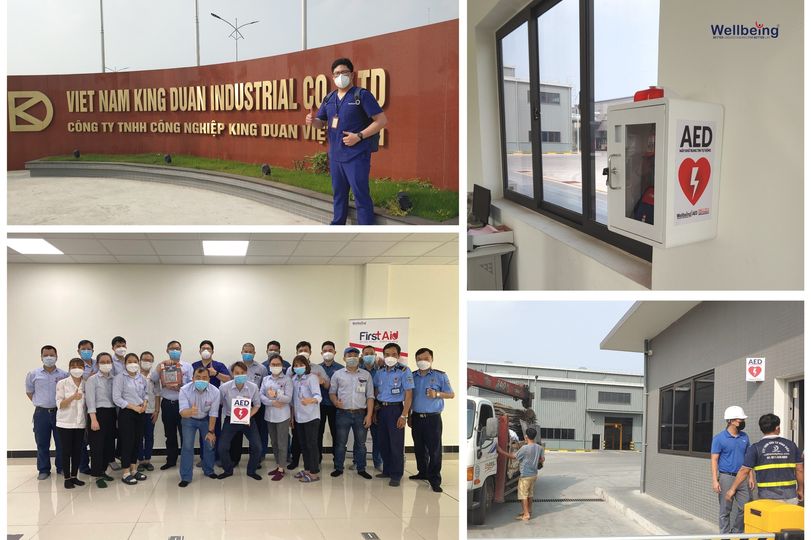WHAT CRITERIAS SHOULD BE CONSIDERED WHEN BUYING AN AED? | WELLBEING
The automatic external defibrillator (AED) works to analyze the victim's heart rate, when necessary, will defibrillate and help the heart re-establish the proper heart rate. Meanwhile, it also instructs the user to perform CPR by its sound and signal showed on the LCD screen mounted on the body. There are at least 7 AED manufacturers and more than 20 different AED models in the world. So, how can you choose a good-quality and suitable AED?
1. What are AEDs used for?
Human heart works normally when the atria and ventricle can pump the blood out of the chambers of the heart. However, in some serious cases, the heart, affected by various factors can not beat normally. It contracts a lot but can not pump blood out of the chambers, which is called heart fibrillation.
The victim's chance of survival is 90% with the help from an AED, for the first minutes. The chance decreases by 10% for every minute without an AED. AEDs works to analyze the victim's heart rate and perform defibrillation if need be, to bring back the normal heart condition. In addition, the device instructs the user to perform cardiopulmonary resuscitation (CPR) by voice and signal on the LCD screen mounted on its body. Most cardiac arrest victims require CPR. AEDs will help the user conduct CPR on the victim more effectively, increasing the victim's chance of survival.
 2. What are criterias to consider when buying an AED?
2. What are criterias to consider when buying an AED?
AEDs are special devices and therefore not common. The price for an AED is not low, either. Therefore, when buying an AED, buyers should take some criterias into account. Below are 5 main criterias to consider when buying an AED, which will help you pick the right product.
2.1. The price
You need to consider the budget that you or your organization can spend to buy the machine. Prices for AED models might vary greatly. An AED offered by major European vendors can cost between 1000 and 2500 euros depending on the brand.
It is important that you consider your budget before buying. However, it should be noted that cheaper is not always better. Therefore, identifying how much you or your organization are willing to pay is a critical requirement.
2.2. Ease of use
How the AED works is also essential for picking the right AED because usage is varying among models and from brands to brands. How the device operates affects largely to its efficiency and the success of the first aid for the victim. Therefore, it is important to choose an AED that is easy to use. Some models of AEDs can give instructions in Vietnamese, making it easier for first aiders to use the AED.
2.3. Cardiogenic shock efficiency
The amperage for the cardiogenic shock is another factor that you should consider. Many studies show that gradually increasing shock amperage can give the victim a better chance of survival. According to the updated AHA guidelines for CPR, higher amperage of cardiogenic shock is recommended to increase the rate of fibrillation termination.
2.4. Maintainance costs
Another factor that you should take into account is the costs associated with maintaining the AED that you are going to purchase. Buying an AED includes more than just the initial purchase cost. During use, there will be other costs related to the replacement of spare parts and batteries.
Therefore, it is very essential that you consider all the costs involved in running and maintaining an AED. Different models will use different types of batteries and other spare parts, each of which has the price vary.
2.5. Who is the AED used for?
Finally, who will the AED be used for? The intensity of the eletric shock will differ between adults and children. An AED intended for use in children may not work properly on an adult victim, and vice versa. In this case, an AED having modes for both children and adults is the best choice.
We hope that you can choose the most suitable AED for you, or your organization based on the information we provide above.
Bình luận:
Không có bình luận nào cho bài viết.
 Tiếng anh
Tiếng anh  Vietnam
Vietnam 




.png)
.png)

